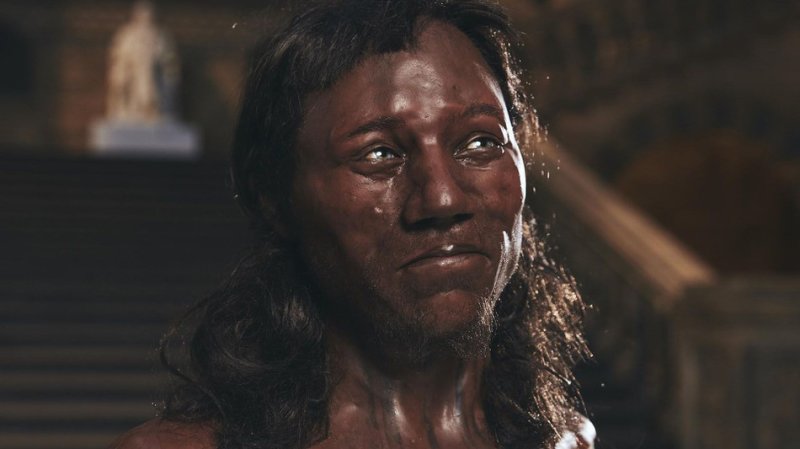Early Brits & Study of Ancient DNA
The study of ancient DNA has unearthed fascinating insights into the history of human populations. One such discovery challenges the long-held belief that early Brits had fair hair and light skin. Recent DNA research conducted on a fossil named “Cheddar Man” has revealed a surprising truth – he possessed dark brown to black skin and dark curly hair. This finding sheds light on the genetic diversity and complex history of ancient Europeans. In this article, we will explore the implications of this groundbreaking discovery and its significance in understanding human evolution.
Unveiling the Truth about Early Brits
Over a century ago, the fossil of a man was discovered in Cheddar Gorge, Somerset, England. Scientists initially believed that this individual, known as “Cheddar Man,” as a member of early Brits shared physical characteristics with modern-day Britons, such as fair hair, light eyes, and light skin. However, recent DNA analysis has defied these assumptions.

The extraction of DNA from the fossil has revealed that Cheddar Man indeed possessed blue eyes but had a significantly different appearance. His skin color ranged from dark brown to black, and he sported dark curly hair. This discovery challenges the notion that lighter skin tones were always prevalent among Europeans and suggests that geographic origin cannot be solely determined by skin color.
Rethinking Racial Categories
Tom Booth, an archaeologist at London’s Natural History Museum, emphasizes the implications of this revelation. He points out that the racial categories we perceive today are modern constructions and do not apply to the past. The DNA analysis of Cheddar Man’s remains demonstrates that such imaginary divisions are recent developments. It highlights the importance of reevaluating our understanding of human history and the complex nature of our origins.
Tracing Cheddar Man’s Ancestry
To extract DNA from the 10,000-year-old fossil, scientists at the Natural History Museum employed a meticulous process. They drilled a tiny hole into the skull and collected a small sample of bone powder. From this powder, a complete genome was isolated, leading to significant findings about Cheddar Man’s ancestry.
Based on the DNA analysis, it was determined that Cheddar Man likely originated from the Middle East, with African ancestry. He then migrated with a small population to Europe using an ancient land bridge known as the Doggerland. Remarkably, approximately 10 percent of the modern white British population can trace their ancestry back to this group.
The Evolution of Complexion
The disparity between Cheddar Man’s complexion and that of modern Britons can be attributed to evolutionary factors. Over time, European populations’ skin tone gradually lightened, allowing for increased absorption of sunlight and vitamin D. This adaptation was advantageous in the cooler and cloudier climate of Europe, where the synthesis of vitamin D through the skin becomes more challenging.
A Glimpse into the Past of Early Brits
The knowledge gained from the DNA extractions has been utilized by museum artists to recreate a bust of Cheddar Man, accurately depicting his appearance from 10,000 years ago. The bust incorporates his dark hair and skin, alongside his light eyes. The intention behind this artwork is to foster a deeper understanding of the origins of skin tone and challenge the prevailing stereotypes associated with it.
Alfons Kennis, the artist behind the bust, highlights the story’s historical significance, which revolves around the migrations of human populations. He believes that this discovery dispels the notion that appearance defines one’s connection to a particular place. The portrayal of Cheddar Man serves as a powerful reminder that we are all immigrants, bound by a shared history of movement and migration.
Conclusion
The revelation of Cheddar Man’s dark skin challenges our preconceived notions about the appearance of early Brits. Through DNA analysis, scientists have debunked the belief that fair hair and light skin were ubiquitous among ancient Europeans. This groundbreaking discovery emphasizes the complexity of human ancestry and the importance of revisiting historical assumptions. By unraveling the secrets contained within ancient DNA, we gain valuable insights into our shared past and the diverse nature of our genetic heritage.
FAQs
Scientists at the Natural History Museum drilled a tiny hole into the skull and obtained a small sample of bone powder. From this powder, they isolated a complete genome, enabling them to analyze Cheddar Man’s genetic makeup.
Based on DNA analysis, Cheddar Man is believed to have originated in the Middle East, with African ancestry.
Cheddar Man and a small population traveled to Europe using an ancient land bridge called the Doggerland.
The lightening of European populations’ skin tone can be attributed to an evolutionary adaptation that allowed for increased absorption of sunlight and vitamin D in cooler and cloudier climates.
The bust serves as a visual representation of Cheddar Man’s appearance, highlighting his dark hair and skin. It aims to challenge stereotypes and foster understanding of the origins of skin tone.



